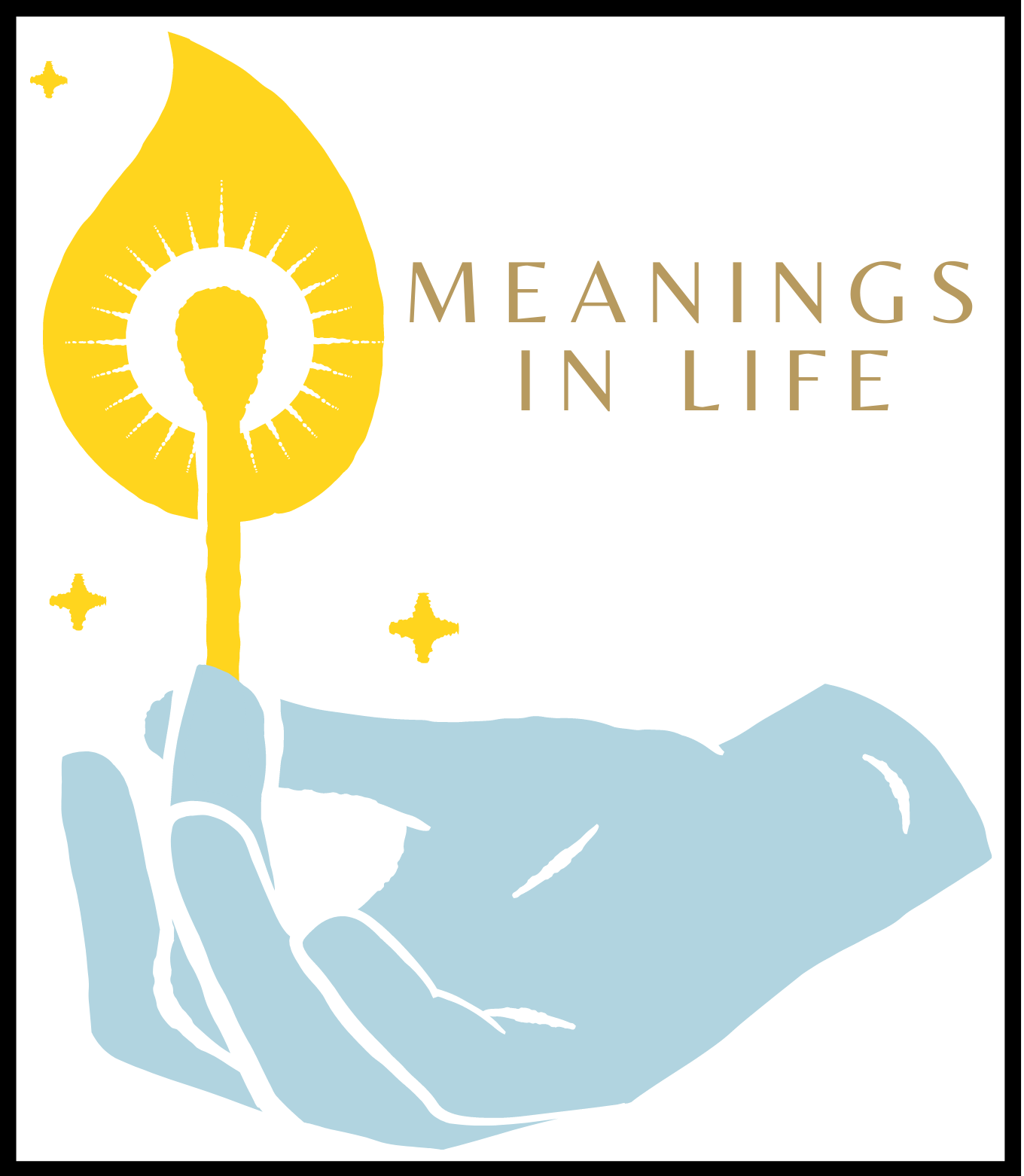A Clandestine Dance of Time and Meaning: The Biblical Significance of April
The Bible, an ancient and sacred text, is teeming with references that resonate to the rhythm of time, both celestial and terrestrial. Months serve a purpose far beyond just tracking days; they are a rich tapestry woven with profound events and meanings. In the Bible, months were recognized as significant phases in the cycle of life – times bearing unique spiritual implications.
Every month was seen as a new beginning, a fresh start that held its own sacred value and opportunities for growth. This perspective offered profound layers to each month’s narrative.
April – or Nisan/Abib as it was known in biblical times – holds an exceptional place in this dance of divine chronology. To truly comprehend its significance requires delving deeper into how time was perceived in biblical times compared to our modern understanding.
Unraveling April: More Than Just A Calendar Month
If we approach April through the lens of contemporary understanding alone, we risk missing out on its richly layered biblical identity. In today’s terms, April is simply our fourth month, noted for the arrival of spring – a season associated with rebirth and renewal.
However, through the prism of biblical timekeeping, April takes on deeper hues. It becomes Nisan/Abib – not merely a month but also an era marked by monumental events that forever changed our relationship with divinity.
Nisan/Abib was considered ‘month number one’ according to the ecclesiastical calendar followed by Hebrews during biblical times. This factor alone elevates its importance significantly over other months.
But there’s more! The events associated with this period provide even more weighty substance to why April (or Nisan/Abib) is much more than just another calendar month.
The Biblical Calendar vs The Gregorian Calendar: Understanding the Difference
A Journey Through Time: The Calendars of History
To fully appreciate the significance of April in the Bible, we need to first understand that the calendars we use today are vastly different from those used during biblical times. Our contemporary calendar, known as the Gregorian calendar, is solar-based and was established in 1582 by Pope Gregory XIII; it’s structured around Earth’s revolutions around the Sun.
However, in biblical times, a lunisolar calendar was used. This type of calendar is based on lunar cycles but also takes into account solar years.
It’s composed of twelve months; each begins and ends with a new moon. This difference in time-keeping can make correlating biblical events with our current calendar quite challenging.
The Hebrew or Jewish calendar used during biblical times (and still used within Jewish communities today) has months which can have either 29 or 30 days depending on when the new moon appears. This results in an occasional ‘leap month’ to ensure festivities stay aligned with specific seasons—something crucial especially for agricultural societies.
When April isn’t Really April: The Nisan/Abib Connection
The Dance Between Sun and Moon: Nisan/Abib and April
Now here’s where things get really interesting – when it comes to translating Hebrew months to our Gregorian ones. The word “April” does not directly appear in original versions of the Bible because it is a name derived from Latin (Aprilis), which is used in our modern Gregorian calendar.
In contrast, according to Exodus 13:4, Nisan (or Abib as it was originally called) is identified as “the month of Spring”. It roughly corresponds to our March-April timeframe but doesn’t mirror it exactly due to differences between the solar and lunisolar calendars.
So, when we talk about April in a biblical sense, we are essentially referring to the Hebrew month of Nisan/Abib. Interestingly, the word “Abib” itself is a reference to barley that is in the stage of ripening.
This reflects the agricultural significance of this time period. It was during this month that several significant religious observances took place, including Passover and Feast of Unleavened Bread.
How Passover and Easter Fit into the Picture
Of Lambs and Lilies: The Spiritual Landmarks of Nisan/Abib
One cannot delve into April’s biblical significance without discussing two major events: Passover and Easter. Both generally occur in what we now call April, albeit on different dates due to varying religious rules and calendar differences.
Passover is a Jewish festival commemorating God’s liberation of the Israelites from Egyptian slavery as narrated in Exodus. It begins on 15th Nisan (in twilight) according to Jewish calendar which may fall anytime between late March or late April as per Gregorian calendar.
Easter, on the other hand, originates from Christian tradition. Celebrating Jesus Christ’s resurrection from death, as written in the New Testament of Bible, it falls on Sunday following first full moon after vernal equinox (around March 21).
This makes it land usually between March 22nd to April 25th. It’s fascinating how these two distinct religious events are deeply woven into both our modern sense of ‘April’ and its ancient predecessor – Nisan/Abib – enriching our understanding of this month beyond mere dates on calendar.
When April was Nisan: Journeying Back to the Hebrew Calendar
In our quest for understanding the significance of April in Biblical terms, we must first acquaint ourselves with a different system of time-keeping; one that existed long before Julius Caesar laid down his calendar reforms. This is the age-old Hebrew calendar, where April finds its equivalent in the month known as Nisan or Abib.
Nisan (also spelled Nissan) is considered the first month of the ecclesiastical year according to this ancient lunar-based calendar. Geographically rooted in an era when agriculture determined much of life’s rhythm, ‘Nisan’ hails from Akkadian origin, translating to ‘month of ripening’ or ‘month of flowers’.
Its alternative name ‘Abib’, on the other hand, means ‘ears of grain’ in Hebrew. It’s easy to see how both names beautifully depict a time when nature revives itself after winter’s slumber.
Yet there is more than just natural beauty associated with Nisan. This month holds a prime position not just on the calendar but also within Jewish religious observations due to its role as host for some key religious festivals.
Unearthing Nisan: An Epoch Of Sacred Observance
As we delve deeper into understanding Nisan and its importance, we find that it stood as a beacon illuminating pivotal moments in Israelite history and religious practice. This was part and parcel due to its weather conditions being ideal for travel; allowing pilgrims from far-flung corners of Israel to journey safely towards Jerusalem. But what truly sets it apart is its theological significance.
The most sacred Jewish festival – Passover (Pesach) – begins on 15th Nisan and lasts for seven days until 21st Nisan. Observance of Passover commemorates their redemption from Egyptian slavery under Moses’ leadership; an event chronicled in the Book of Exodus.
Moreover, Nisan is also noteworthy for heralding the advent of spring, thus symbolically representing a season of renewal and rebirth. This inherent symbolism was further emphasized by its association with Easter, celebrating Jesus Christ’s resurrection – a pivotal event in Christian faith.
Nisan’s Narrative: Chronicles Of A Sacred Month
There is no dearth of significant events that occurred during Nisan on the Biblical timeline, making it more than just another month on the Hebrew calendar. It was witness to some pivotal moments that shaped Jewish history and faith. In terms of Biblically recorded events, perhaps none is more well-known than Israelites’ Exodus from Egypt under Moses’s leadership (Exodus 12), which began on 15th Nisan.
Centuries later, Israel’s deliverance from Haman’s plot as told in the Book of Esther took place when Esther stood before King Ahasuerus – a momentous event celebrated annually during Purim. But it wasn’t just Old Testament history that unfolded under Nisan’s watch.
The New Testament too records key moments occurring during this time. Foremost among these would be Jesus Christ’s crucifixion and subsequent resurrection; events that fundamentally reshaped Christian theology and are solemnly commemorated every Easter Sunday.
Each layer we uncover about Nisan adds depth to our understanding of April’s significance from a Biblical perspective. We see how it stands not just as a measure of time but as a testament to God’s providence throughout history.
The Pivotal Role of Passover: A Time of Remembrance and Redemption
The Passover, or Pesach in Hebrew, holds a central position in the narrative of biblical events that occur in Nisan/Abib (April). Its roots are deeply embedded in the historical and religious fabric of Judaism. Originating from the Exodus story narrated in the book of Exodus, it dramatizes a crucial turning point for the Israelites—their liberation from slavery in Egypt.
The term ‘Passover’ is symbolic; it represents how God ‘passed over’ the houses of Israelites during the final and most devastating of his ten plagues—killing every firstborn son in Egyptian households while sparing those in Israeli abodes where lamb’s blood was smeared on doorposts. Significantly, Passover is not merely an ancient recollection; it serves as an enduring testament to divine intervention and salvation.
Jews worldwide continue to commemorate this event through an elaborate meal known as a Seder on Nisan 15, which includes retelling the Exodus story and partaking symbolic foods. Each component contributes to remembering their ancestors’ hardship under Pharaoh’s oppression and celebrating their eventual freedom.
Jesus, The Last Supper, and The Intriguing Interface with Passover
“Breaking bread” at an intimate gathering takes on profound significance when we delve into its connection with Jesus’s Last Supper. We find ourselves at a crossroad where Christian tradition converges with Jewish heritage. In fact, many biblical scholars concur that Jesus’s Last Supper was likely a Passover Seder.
The Last Supper paints one of Christianity’s most evocative images—Jesus surrounded by his apostles sharing bread and wine—promising these elements represented his body soon to be broken on the cross, his blood about to be shed for humanity’s sins. This reinterpretation transformed the Passover Seder, a meal symbolizing Jewish emancipation from physical bondage, into a profound Christian sacrament representing spiritual liberation through Christ’s sacrifice.
Furthermore, it is in this context we witness Jesus’s act of washing his disciples’ feet—a profound demonstration of love and servitude. The Last Supper thus becomes a powerful allegorical tableau, bridging Old Testament and New Testament narratives, weaving together threads of deliverance and sacrifice underscored by divine love.
Reframing the Passover Narrative: A Bridge between Testaments
While on one hand remaining true to its historical roots in Judaism, Passover also evolves in the Christian context as a precursor to Easter—the commemoration of Jesus’s resurrection. This dual significance imbues Nisan/Abib (April) with layers of symbolic interpretation across religious traditions—standing testament to God’s unchanging commitment to deliverance and renewal throughout biblical history.
With the transition from Old Testament deliverance from physical slavery to New Testament salvation from spiritual bondage via Christ’s sacrificial death and resurrection, Passover transcends its original role. It becomes a pivotal event linking Jewish history with Christian theology—an eternal reminder that God delivers us not only from oppression but also offers redemption through sacrifice.
Easter – Resurrection Sunday and its Connection to April
A Shift from Passover to Resurrection Celebration
Easter, famously known as Resurrection Sunday, is a festival that holds great significance in the Christian calendar. Its roots trace back to biblically historic times, and it’s commonly observed in the month of April.
While it may seem like an odd jump from discussing Passover to Easter, these two events are integrally linked. The Last Supper Jesus shared with his disciples was a Passover meal.
And it was soon after this meal that Jesus was crucified and then resurrected. Easter ostensibly celebrates Jesus Christ’s resurrection from the dead, a cardinal event upon which much of Christian faith rests.
This celebration does not have a set date but usually falls between March 22nd and April 25th on the Gregorian calendar – frequently within the month of April. Interestingly, the name “Easter” does not appear anywhere in the Bible.
It is believed to have originated from Eostre or Ostara, an Anglo-Saxon pagan goddess of dawn and springtime symbolizing fertility and rebirth. The early English Christians adopted her name for their take on the Paschal celebrations.
Exploring Easter’s Roots in the Bible
Resurrected Hope: Unearthing Easter’s Biblical Genesis
To truly understand Easter’s biblical roots, one must venture into New Testament scriptures where accounts of Christ’s death and resurrection are told. The four gospels – Matthew, Mark, Luke, and John all narrate these events with varying degrees of emphasis.
The Gospel of John places significant attention on these occurrences unfolding during Passover week – around Nisan 14-15 on Hebrew Calendar (typically falling in March/April). As per biblical recounting in John 20:1–18, on the first day of the week (Sunday), Mary Magdalene visited Jesus’ tomb and found it empty.
An angelic being informed her that Jesus had risen. This marked the beginning of Easter’s story.
This event changed the course of Christian belief and set followers on a spiritual journey that continues to this day. It has shaped Christian liturgy and worship, leading to ritual practices such as Holy Communion or Eucharist, which commemorate the Last Supper.
Jesus’ Resurrection: An Event that Changed History
The Ripple Effect of a Miraculous Moment
Jesus’ resurrection is arguably the most significant event in Christian history. It not only validated His teachings but also brought forth new dimensions to humanity’s relationship with God. The resurrection was proof of Christ’s divinity – only a divine entity could conquer death in such a manner as He did.
It reinstated hope for believers that despite life’s tribulations, there is an eternal existence beyond our earthly lives. The cascading impact of this miraculous event was dramatic – His apostles, initially disillusioned by His death, transformed into valiant proclaimers of faith following His resurrection appearances to them.
Thomas, famously known for his doubts about Jesus’ resurrection until he saw Him personally (John 20:24-29), is an exemplary figure here. This renewed conviction led to widespread evangelism that eventually birthed Christianity as we know it today – deeply rooted in Easter’s significant message: Death has been defeated; hope is very much alive.
The Feast of Unleavened Bread & Feast of First Fruits – Their Timing & Symbolism
Unveiling the Symbolism: Bread without Yeast
Just as April holds a particular significance in the biblical calendar, so too do symbols and rituals play incredibly vital roles in understanding the spiritual lessons embedded within scripture. One potent symbol is the unleavened bread, which is part and parcel of Passover celebrations. During this time, Jewish households remove all leaven from their homes and partake only in unleavened bread for a week.
The meticulous removal of leaven signifies eliminating sin from our lives, as yeast often metaphorically denotes sin due to its permeating nature. The act serves as an annual reminder for believers to introspect, cleanse themselves of impurities, and strive towards holiness.
Furthermore, the unleavened bread also reminds us of the haste with which Israelites left Egypt during Exodus – there was no time for their bread to rise. In Christian theology, this humble bread takes on an even deeper meaning.
It represents Jesus Christ who lived a life without sin (leaven). In 1 Corinthians 5:7-8, Apostle Paul made this connection by proclaiming Christ as our Passover lamb who has been sacrificed.
A Harvest Thanksgiving: First Fruits – Celebrating God’s Provision
Closely following Passover and the Feast of Unleavened Bread in Nisan (April) is another notable celebration – The Feast of First Fruits. This feast marks Israel’s gratitude toward God’s provision and generosity. It involves presenting the first yield from their harvest in acknowledgment that all good things flow from God’s grace.
Rooted deeply in gratitude and humility, it symbolises an offering back to God out of thankfulness for His abundant blessings. The act also exhibits trust in His continued provision.
By offering the first and best part of the harvest, believers show their confidence that God will replenish and provide more in due season. The Feast of First Fruits also carries profound Christian significance.
It is observed on the day after Sabbath during the week of Unleavened Bread, which typically falls on a Sunday. The day marks Christ’s resurrection – His victory over death.
Just as the first fruits are an assurance of a greater harvest to come, Christ’s resurrection assures believers of eternal life – making Him the ‘First Fruits’ of those who have fallen asleep (1 Corinthians 15:20). In each celebration, there is a thread that connects us back to April (Nisan) – a month filled with spiritual implications and divine messages worth contemplating upon.
April Showers Bring May Flowers – A Biblical Interpretation
The Rain of Blessing: Viewing Precipitation as a Divine Gift
To understand the biblical interpretation of the familiar phrase, “April showers bring May flowers,” it is essential to view rain through a theological lens. According to scripture, water is often used both literally and metaphorically to represent life, cleansing, and divine blessing. In Leviticus 26:4, God promises His people that “I will send you rain in its season, and the ground will yield its crops and the trees their fruit.” This is more than an agricultural assurance; it reveals a spiritual truth.
The concept of ‘rain from heaven’ is not restricted to the Old Testament but extends into New Testament doctrine as well. An example can be found in Acts 14:17 where Paul and Barnabas speak about God’s kindness in providing people with “rain from heaven and fruitful seasons.” Here again, we see evidence of an intentional metaphor – one depicting God’s generous provision for His creation.
Rain in April could therefore symbolize these divine showers of blessings – gifts from above that allow for growth and fruitfulness. The idea here isn’t just about abundant crops or colourful flowers but extends further into spiritual prosperity – God’s abundant favour pouring upon us.
Growth & Renewal: Drawing Spiritual Lessons from Nature
Nature holds profound wisdom if we are willing to observe closely. As April’s gentle rains replenish the earth after winter’s harshness, so too do spiritual ‘showers’ revitalize our spirits after periods of hardship or drought.
This cycle mirrors what happens when we allow divine ‘rain’ – grace, mercy, love – to soften our hardened hearts or moisten our dry souls. Just as nature responds to rain with growth and renewal— sprouting seedlings pushing through softened soil, barren trees bursting into bloom— we too can experience spiritual growth and renewal.
When we permit God’s blessings to permeate our lives, we flourish. Like well-watered plants, our lives can bear the fruits of the Spirit: love, joy, peace, patience, kindness, goodness, faithfulness.
As May follows April and brings with it an explosion of life and colour – so does spiritual growth follow divine blessings. Every trial steeped in grace becomes a chance for us to grow stronger in faith.
Every challenge watered with divine mercy gives us an opportunity to blossom into better versions of ourselves. Just as April showers usher in May flowers, so do God’s showers of blessing bring forth spiritual blossoming.
Then – when you think of ‘April showers’, remember that they symbolize more than just seasonal precipitation; they are a reminder of God’s unending love and favour raining down upon us. And when you witness the beauty of ‘May flowers’, let them serve as a testament to the spiritual growth that can spring from every shower of divine blessing.
Conclusion: Harvesting the Wisdom of April’s Biblical Significance
Finding Relevance in the Present
April, as we have discovered, is more than just a month; it’s a treasury of spiritual insights and biblical teachings. The significance it holds in biblical history isn’t merely confined to the past – it resonates with our present lives as well. Therein lies its true relevance.
The celebration of Passover, for instance, serves as a reminder of liberation from spiritual bondage and renews our commitment to leading lives that honor God’s values. Jesus’ Last Supper and subsequent resurrection during this month further amplify this message of redemption and transformation.
Furthermore, the Feast of Unleavened Bread teaches us about sincerity and truth while fostering a deep appreciation for God’s providence. Even nature’s rhythm during April—signified by nurturing showers leading to blooming flowers—echoes spiritual lessons about growth, renewal and divine blessings.
Walking into Wisdom: An Invitation for Deeper Exploration
Having navigated through April’s biblical landscape, it’s crucial to understand that our exploration doesn’t end here. The Bible is an ocean of wisdom with countless layers waiting to be unveiled, providing us with valuable life lessons that remain relevant regardless of time or era.
Embarking on this journey can seem overwhelming at first given its vastness; just like setting foot into an unknown terrain would be. But fear not!
Once you surrender yourself to divine guidance and genuine curiosity—you will find your path. In your pursuit of wisdom embedded within these sacred texts—whether it be other months or topics—I invite you to delve deeper into their meanings and interpretations; opening your mind to new perspectives and inviting transformational change into your life.
A Timeless Tapestry: Reflecting on Our Journey
Our exploration has shed light on how every thread in the month of April is woven into an intricate tapestry of spiritual lessons and narratives. It’s like a door waiting to be opened, revealing a path that connects us to our roots while guiding our steps towards the future.
However, the real beauty lies in these lessons’ timeless relevance—serving as guiding beacons that illuminate our paths and enrich our understanding of life’s deeper meanings. It’s only by acknowledging this interconnectedness between past, present and future that we can truly appreciate April—and every other month—in its full glory.
Remember: This journey isn’t meant to end—it’s meant to evolve. So let’s continue exploring, discovering, and growing on this enlightening path together!




